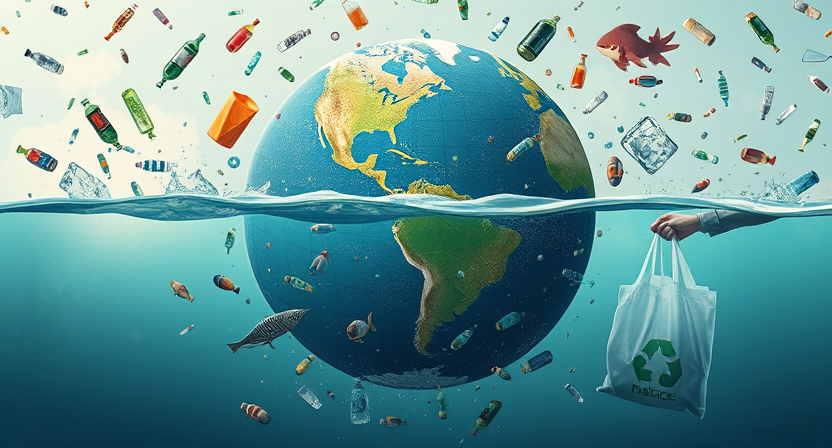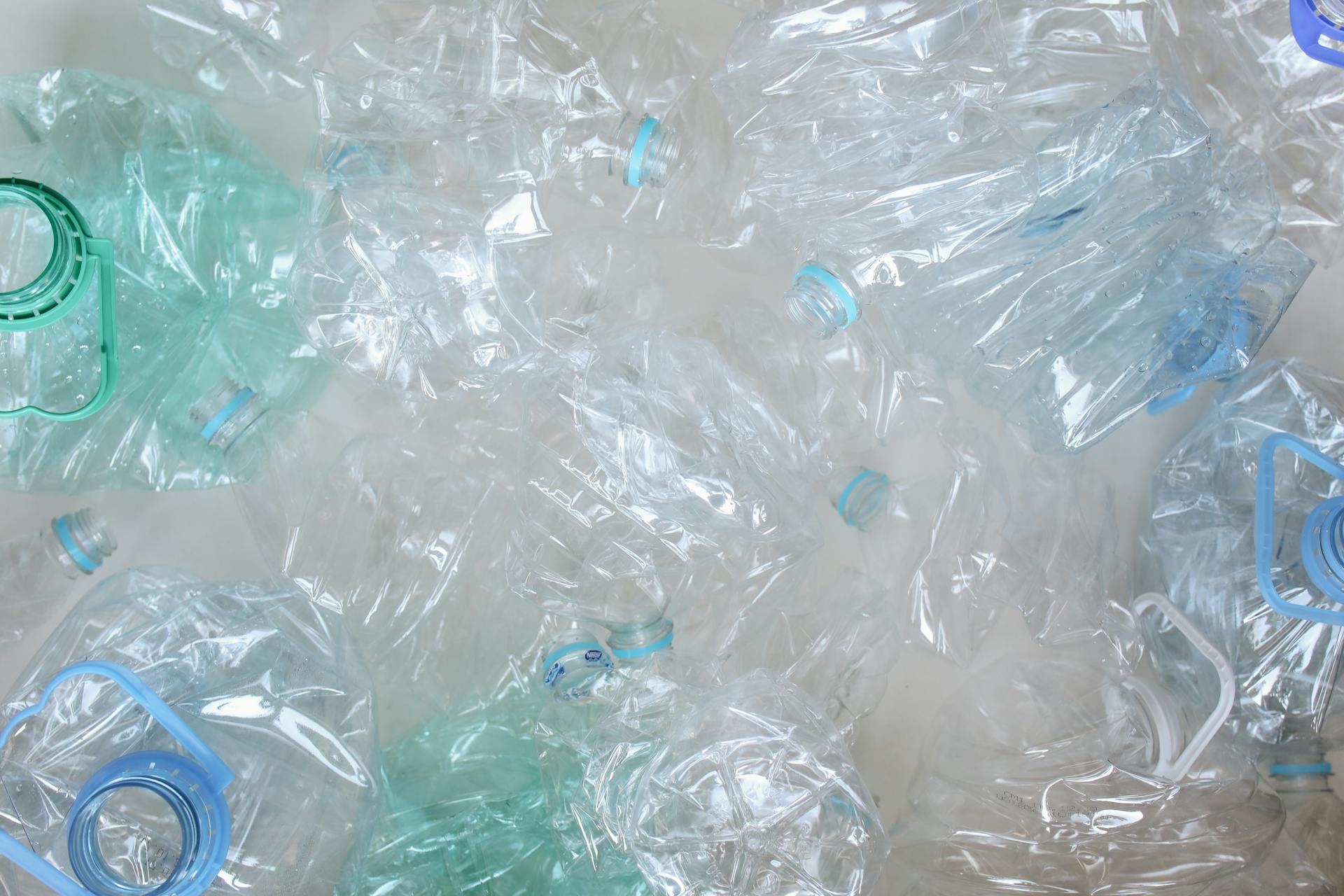The Impact of Plastic Pollution on Marine Life

Plastic pollution in our oceans is a pressing concern that continues to threaten marine life. The devastating effects of plastic waste on marine animals are increasingly evident, with reports of entangled animals and ingestion of plastic debris becoming more common. From seabirds to sea turtles, many species are suffering due to the presence of plastic in their habitats, leading to injuries, starvation, and even death.
The presence of plastic in marine ecosystems also poses a significant threat to the health of coral reefs and other vital habitats. As plastic debris accumulates in the ocean, it can smother coral reefs, disrupt marine food chains, and alter the balance of delicate ecosystems. The long-term consequences of plastic pollution on marine life are far-reaching, highlighting the urgent need for concerted efforts to reduce plastic waste and protect the health of our oceans.
How Plastic Waste Contributes to Climate Change

Plastic waste contributes to climate change through various mechanisms. When plastics are produced, they require the extraction and processing of fossil fuels, releasing greenhouse gases into the atmosphere. Additionally, the incineration of plastic waste leads to the emission of toxic substances and greenhouse gases such as carbon dioxide and methane, further exacerbating the climate crisis.
Moreover, plastic pollution in oceans and waterways disrupts marine ecosystems, impacting the balance of carbon cycle regulation. When plastic debris breaks down into smaller pieces, it releases harmful substances and microplastics that can absorb and transport other pollutants. As a result, these pollutants can enter the food chain, affecting marine life and ultimately contributing to the disruption of natural carbon sequestration processes.
The Harmful Effects of Microplastics on Ecosystems

Microplastics, tiny plastic particles less than 5mm in size, pose a significant threat to aquatic ecosystems worldwide. These minute pollutants can be found in oceans, lakes, and rivers, where they bioaccumulate in the food chain, causing harm to a wide array of marine organisms. Fish, seabirds, and other wildlife often mistake microplastics for food, leading to internal blockages, malnutrition, and even death. As microplastics persist in the environment for extended periods, their detrimental effects on ecosystems continue to escalate.
Moreover, the presence of microplastics in aquatic environments can alter the physical and chemical properties of habitats, disrupting the balance of ecosystems. These minuscule plastic particles can carry toxic chemicals and absorb pollutants from the surrounding environment, amplifying the harm to marine life. Additionally, microplastics can transport harmful microorganisms, posing a threat to biodiversity and ecosystem stability. The pervasive nature of microplastics highlights the urgent need for comprehensive strategies to mitigate their adverse impacts on ecosystems and safeguard marine biodiversity.
Plastic’s Role in Endangering Wildlife Species

Plastic pollution poses a significant threat to wildlife species around the world. Marine animals, such as sea turtles, seabirds, and dolphins, are particularly vulnerable to the harmful effects of plastic waste. These creatures often mistake plastic debris for food, ingesting it and suffering from internal injuries, digestive issues, and even death. Additionally, marine mammals can become entangled in plastic materials like fishing nets and six-pack rings, leading to suffocation, strangulation, and physical deformities.
The impact of plastic pollution on terrestrial wildlife is equally distressing. Land animals, such as deer, foxes, and bears, are at risk of ingesting small plastic particles or becoming entangled in larger plastic items like bags and packaging materials. This can impair their ability to forage for food, reproduce, and thrive in their natural habitats. As plastic debris continues to accumulate in ecosystems worldwide, the survival of many wildlife species is threatened, underscoring the urgent need for collective action to address this pressing environmental issue.
The Connection Between Plastic Production and Greenhouse Gas Emissions

Plastic production significantly contributes to greenhouse gas emissions, primarily through the extraction and processing of fossil fuels needed to create plastic. The production of plastics also releases emissions during manufacturing processes, transportation of raw materials and finished products, as well as waste management. The entire lifecycle of plastic, from extraction to disposal, releases greenhouse gases into the atmosphere, exacerbating climate change.
Furthermore, the chemical processes involved in plastic production, such as polymerization and synthesis, often rely on energy-intensive procedures that further increase carbon emissions. In addition to greenhouse gas emissions, plastic production also generates other pollutants that contribute to air and water pollution, further impacting the environment and human health. As the global demand for plastic continues to rise, it is crucial to address the link between plastic production and greenhouse gas emissions to mitigate the environmental impacts of this pervasive material.
The Health Risks Associated with Consuming Food and Water Contaminated by Plastic

The ingestion of food and water contaminated by plastic poses significant health risks to humans. When plastic breaks down into microplastics, it can leach harmful chemicals and toxins into the food chain, eventually finding their way into our bodies. Studies have shown that these chemicals, such as phthalates and bisphenol A (BPA), can disrupt our endocrine system, leading to various health issues including hormonal imbalances, reproductive problems, and even an increased risk of certain cancers.
Moreover, consuming seafood and other marine organisms that have ingested microplastics can further exacerbate health concerns. As plastics accumulate in the oceans, they are mistaken for food by marine species, causing bioaccumulation of toxins in their tissues. When humans consume contaminated seafood, they unknowingly intake these toxins, which can have detrimental effects on their health over time. It is crucial to raise awareness about the health implications of plastic pollution in our food and water sources to protect both ourselves and the environment.
The Economic Costs of Plastic Pollution for Communities and Governments

Plastic pollution inflicts substantial economic costs on communities and governments worldwide. Cleanup efforts and waste management systems strained by the sheer volume of plastic waste require significant financial resources. Additionally, the detrimental impact of plastic pollution on tourism and fishing industries further exacerbates economic burdens for local communities and governments alike. The expenses associated with treating health issues arising from plastic contamination in water sources and food chains contribute to escalating healthcare costs and strain on public resources.
Moreover, the degradation of ecosystems due to plastic pollution leads to diminished agricultural output and reduced biodiversity, translating into economic losses for communities reliant on natural resources for their livelihoods. The long-term effects of plastic pollution on the environment also entail expenses related to restoring degraded ecosystems and mitigating the consequences of climate change as a result of plastic’s role in greenhouse gas emissions. In light of these economic repercussions, addressing plastic pollution is not only an environmental imperative but a vital economic necessity for the well-being of communities and governments worldwide.
The Importance of Recycling and Proper Waste Management in Reducing Plastic Pollution

Recycling and proper waste management play a crucial role in mitigating the harmful impact of plastic pollution on our environment. By recycling plastic materials, we can reduce the amount of plastic waste ending up in landfills and oceans, where it poses a threat to marine life and ecosystems. Through effective waste management practices, such as sorting and separating different types of plastics for recycling, we can help decrease the overall volume of plastic waste generated and prevent it from contaminating our natural surroundings.
Additionally, promoting recycling and proper waste management initiatives can help conserve valuable resources and reduce the energy consumption associated with manufacturing new plastic products. By reusing and recycling plastic materials, we can minimize the need for virgin plastics production, which in turn lowers greenhouse gas emissions and environmental degradation. Encouraging individuals and communities to participate in recycling programs and adopt sustainable waste disposal practices is essential in creating a more environmentally conscious society and safeguarding our planet for future generations.
Innovative Solutions for Reducing Single-Use Plastics

One effective solution for reducing single-use plastics is the widespread adoption of reusable alternatives. Encouraging individuals to carry reusable water bottles, shopping bags, and containers can significantly cut down on the amount of plastic waste generated on a daily basis. By incorporating reusable items into their everyday routines, people can minimize their environmental impact and contribute to a more sustainable future.
Another innovative approach involves the development and promotion of compostable packaging materials. Unlike traditional plastics that can take hundreds of years to decompose, compostable materials break down easily in composting systems, reducing the burden on landfills and oceans. Companies and industries can play a crucial role in transitioning to compostable packaging options, helping to shift away from reliance on single-use plastics and towards more environmentally friendly alternatives.
The Role of Businesses and Industries in Addressing the Plastic Problem

Businesses and industries play a crucial role in addressing the plastic problem by implementing sustainable practices within their operations. This involves reducing the use of single-use plastics, adopting eco-friendly packaging alternatives, and promoting recycling initiatives. Companies can also collaborate with suppliers to source materials that are less harmful to the environment, thus minimizing the impact of plastic pollution on ecosystems.
Moreover, businesses have the opportunity to educate consumers about the importance of reducing plastic waste and supporting sustainable products. By raising awareness and offering environmentally friendly options, companies can influence consumer behavior towards more eco-conscious choices. Through innovation and corporate responsibility, businesses can contribute significantly to mitigating plastic pollution and fostering a more sustainable future for our planet.
Government Policies and Regulations Aimed at Reducing Plastic Pollution

Government policies and regulations play a crucial role in addressing the growing issue of plastic pollution. By implementing laws that restrict the use of single-use plastics, promote recycling programs, and encourage the adoption of sustainable packaging, governments can significantly reduce the amount of plastic waste entering our oceans and ecosystems. These regulations also hold businesses accountable for their plastic production and waste management practices, ultimately shifting towards a more circular economy that prioritizes environmental sustainability.
Additionally, governmental initiatives such as plastic bans, extended producer responsibility programs, and incentives for innovative plastic alternatives are key strategies in reducing plastic pollution. By creating a legal framework that incentivizes businesses to adopt greener practices and invest in eco-friendly solutions, countries can make significant progress in combatting the plastic crisis. Strong enforcement of these policies, coupled with public awareness campaigns and community engagement, are essential components in driving meaningful change and fostering a culture of environmental responsibility.
The Impact of Plastic Bans and Restrictions on Environmental Conservation

Plastic bans and restrictions have shown promising results in safeguarding the environment by curbing the proliferation of single-use plastics. By limiting the production and consumption of plastic items such as bags, straws, and utensils, these measures help mitigate the detrimental impact of plastic pollution on ecosystems and wildlife populations. Marine animals, in particular, benefit from reduced plastic waste in their habitats, as it lowers the risk of entanglement, ingestion, and overall disruption of their natural environments.
Moreover, plastic bans and restrictions stimulate the transition towards more sustainable alternatives, promoting innovation in eco-friendly materials and packaging solutions. Businesses and consumers alike are compelled to seek out greener options, encouraging a shift towards a circular economy that minimizes waste and conserves resources. As a result, environmental conservation efforts are bolstered, fostering a healthier planet for current and future generations to thrive in.
The Benefits of Using Biodegradable and Compostable Alternatives to Plastic

Biodegradable and compostable alternatives to plastic offer a sustainable solution to the environmental challenges posed by traditional plastic products. These alternatives break down naturally, reducing the accumulation of waste in landfills and oceans. By choosing biodegradable and compostable materials, individuals and businesses can minimize their ecological footprint and contribute to a cleaner, healthier planet.
Furthermore, biodegradable and compostable alternatives to plastic help reduce the reliance on fossil fuels, as they are often made from renewable resources such as plants and organic matter. This shift towards more sustainable materials not only benefits the environment but also supports a more circular economy that promotes resource efficiency and conservation. Embracing biodegradable and compostable options can pave the way for a greener future and foster a more harmonious relationship between human activities and nature.
Educational Campaigns and Community Initiatives to Raise Awareness About Plastic Pollution

Educational campaigns and community initiatives play a vital role in raising awareness about the environmental impact of plastic pollution. By organizing workshops, seminars, and outreach programs, these initiatives aim to educate individuals about the detrimental effects of single-use plastics on our oceans, wildlife, and ecosystems. Through engaging and informative content, they seek to empower communities to make more sustainable choices in their daily lives and reduce their plastic consumption.
Additionally, these campaigns strive to foster a sense of collective responsibility and encourage communities to take action towards mitigating plastic pollution. By promoting recycling, encouraging the use of reusable alternatives, and advocating for policy changes, these initiatives aim to create a culture of environmental awareness and conservation. Through collaborative efforts and widespread dissemination of information, educational campaigns and community initiatives can inspire individuals to become agents of change in the fight against plastic pollution.
The Power of Consumer Choices in Influencing Companies to Adopt Sustainable Practices

Consumers have a significant impact on companies by choosing products that align with their values. When consumers opt for sustainable and eco-friendly options over traditional plastic products, they send a clear message to companies about the importance of environmental responsibility. This demand for sustainable practices can drive companies to reevaluate their production processes and make changes towards more environmentally friendly alternatives.
The power of consumer choices is evident in the shift towards sustainable practices seen in many industries. As more consumers prioritize sustainability and show a willingness to support businesses that share their values, companies are under increasing pressure to adopt greener practices. By choosing to support companies that prioritize sustainability, consumers play a vital role in driving positive change towards a more sustainable future.
The Role of Technology in Developing Sustainable Packaging Solutions

In the realm of sustainable packaging solutions, technology plays a pivotal role in driving innovation and progress. Advanced materials like biodegradable plastics and compostable alternatives are being developed to reduce the environmental impact of traditional packaging materials. These eco-friendly options are designed to break down more efficiently in the environment, ultimately contributing to a reduction in plastic pollution.
Moreover, technological advancements are enabling the creation of packaging solutions that are not only sustainable but also functional and appealing to consumers. From edible packaging made from natural ingredients to smart packaging that helps extend the shelf life of products, technology is paving the way for a more sustainable and efficient packaging industry. By harnessing the power of technology, companies can lead the charge towards a greener future and make significant strides in combating the global plastic crisis.
• The development of biodegradable plastics and compostable alternatives
• Edible packaging made from natural ingredients
• Smart packaging that extends the shelf life of products
• Technology driving innovation in sustainable packaging solutions
• Companies leading the way towards a greener future through technology integration
The Need for Collaboration Among Stakeholders to Address the Plastic Crisis

Collaboration among stakeholders is crucial in addressing the plastic crisis effectively. When organizations, governments, communities, and individuals work together towards common goals, the impact can be significant. By pooling resources, expertise, and innovative ideas, collective efforts can lead to more comprehensive and sustainable solutions to reduce plastic pollution and its detrimental effects on the environment.
Stakeholders from various sectors, including business, government, non-profit organizations, and research institutions, play a vital role in driving change and fostering a culture of environmental stewardship. Through open communication, mutual respect, and shared objectives, collaborative initiatives can leverage diverse perspectives and skills to tackle the multifaceted challenges posed by plastic pollution. By fostering partnerships and engaging in collective action, stakeholders can catalyze positive change and pave the way for a more sustainable future for our planet.
The Importance of Advocacy and Activism in Promoting Policy Change

Advocacy and activism play a crucial role in driving policy change related to plastic pollution. Individuals and groups dedicated to environmental causes are often at the forefront of raising awareness, pushing for regulations, and holding governments and corporations accountable for their plastic waste management practices. Through their advocacy efforts, they amplify the voices of affected communities and highlight the urgency of addressing the plastic crisis from a policy perspective.
By mobilizing public support, advocacy groups can influence policymakers to prioritize sustainable solutions and implement stricter regulations to curb plastic pollution. Their campaigns and initiatives not only shed light on the detrimental effects of plastic on the environment but also inspire collective action towards adopting more eco-friendly practices. Through persistent advocacy and activism, these groups strive to create a future where plastic pollution is minimized, ecosystems are protected, and communities can thrive in a cleaner, healthier environment.
How Individuals Can Reduce Their Plastic Footprint in Daily Life

Reducing plastic waste in daily life is a simple yet impactful way for individuals to contribute to environmental conservation. One practical step is to carry a reusable water bottle and coffee cup to avoid single-use plastic containers. Additionally, opting for products with minimal or no plastic packaging while shopping can significantly decrease personal plastic consumption.
Another effective method is to bring reusable bags when grocery shopping or running errands to reduce the need for plastic bags. Choosing products with eco-friendly packaging or buying in bulk can further minimize plastic usage. Lastly, being mindful of personal habits such as avoiding plastic straws, utensils, and disposable cutlery can make a difference in reducing plastic waste generation in daily routines.
The Long-Term Benefits of Taking Action Against Plastic

Taking action against plastic pollution can lead to a healthier environment for current and future generations. By reducing plastic waste, we can help protect marine life, ecosystems, and wildlife from the harmful effects of plastic contamination. This, in turn, can contribute to the preservation of biodiversity and the balance of natural ecosystems, ensuring a more sustainable planet for all.
Additionally, tackling plastic pollution can have long-term benefits for human health. By minimizing the consumption of food and water contaminated by plastic, we can reduce the risks of ingesting harmful chemicals and microplastics. This can lead to improved public health outcomes, as well as lower healthcare costs associated with treating illnesses related to plastic exposure. Ultimately, taking action against plastic pollution is not just about protecting the environment but also about safeguarding human well-being for years to come.




